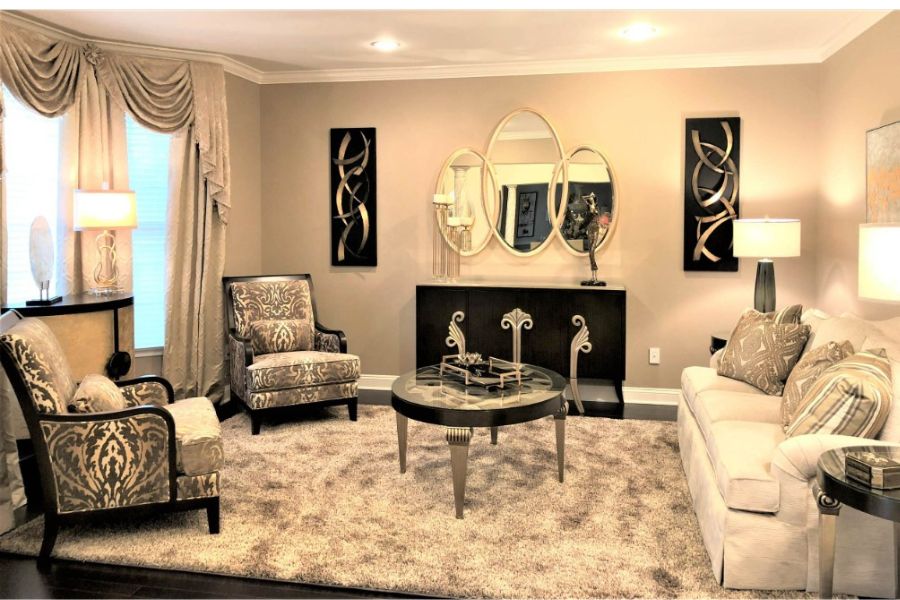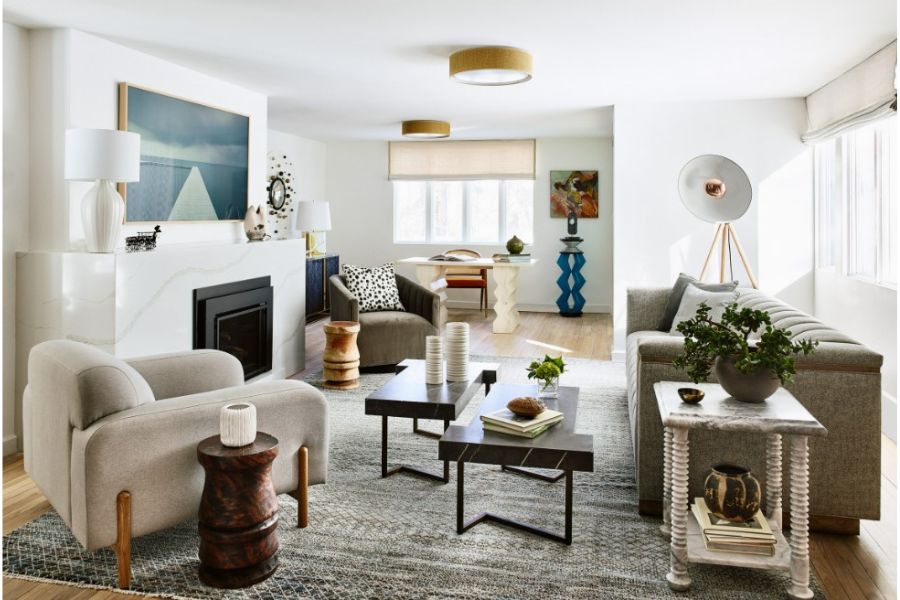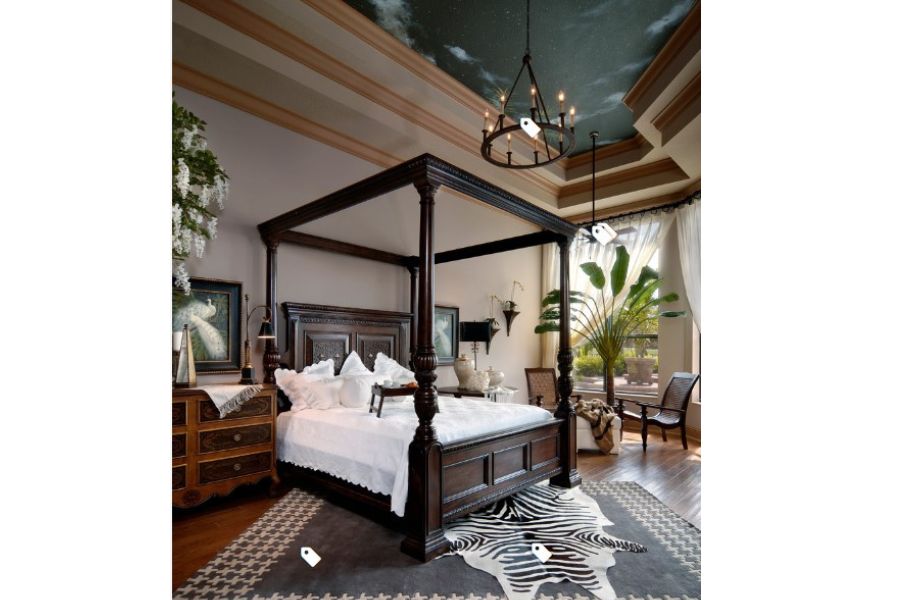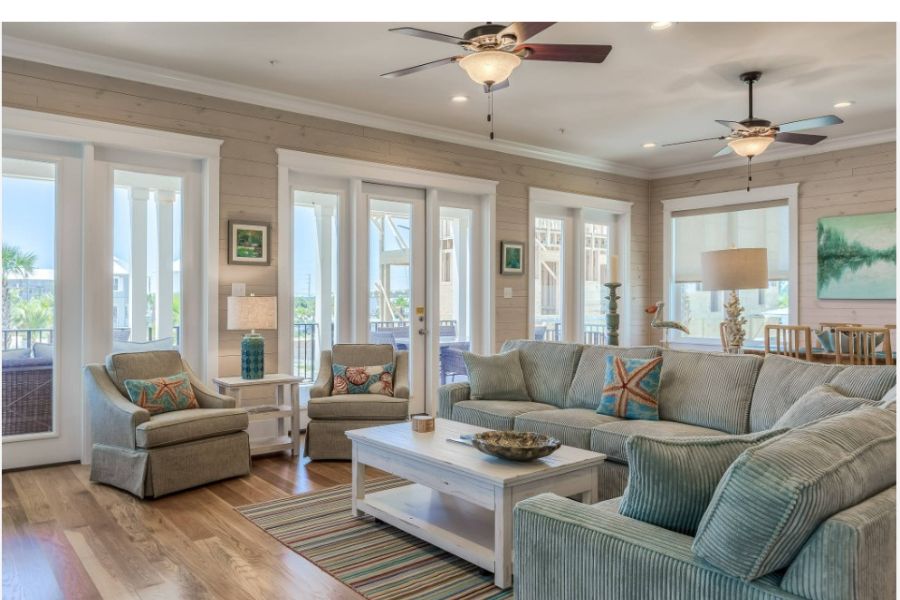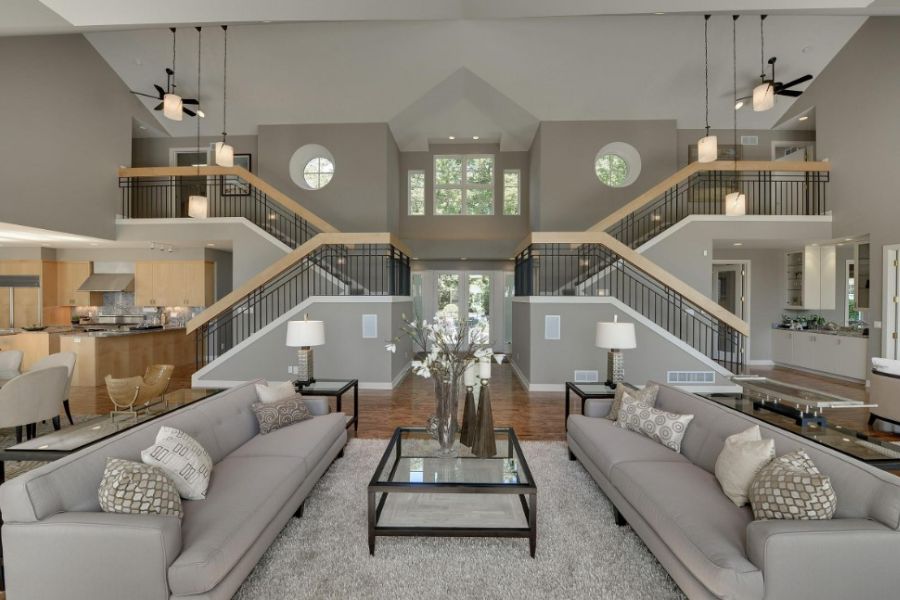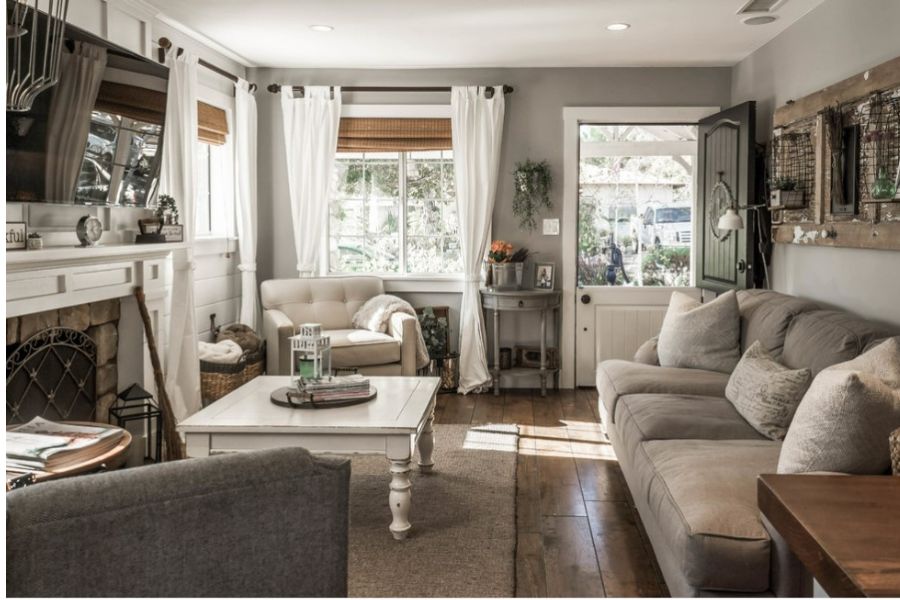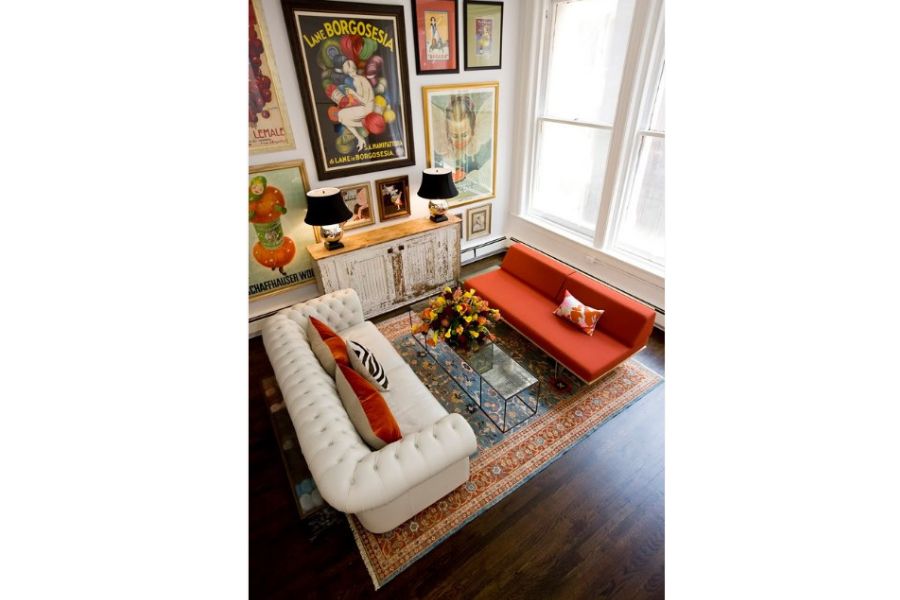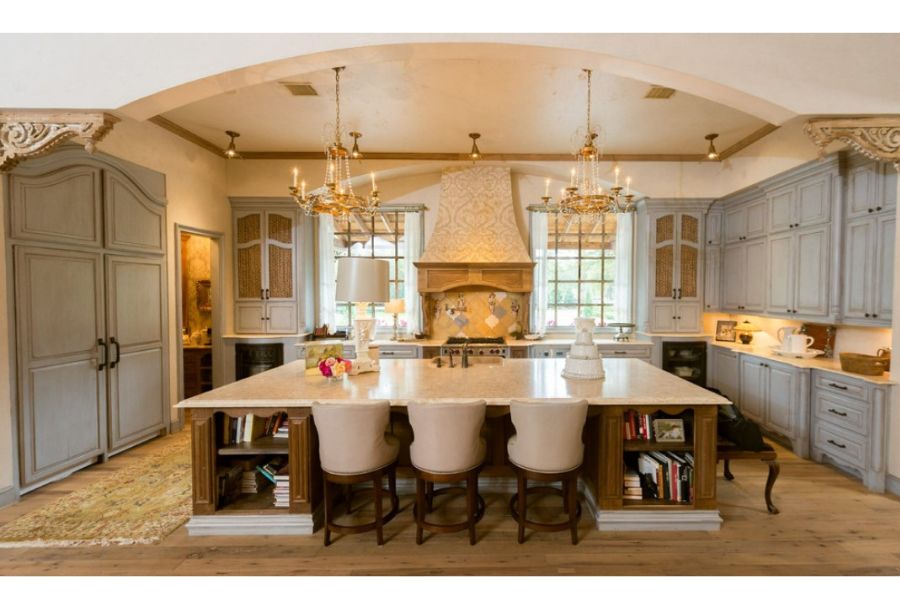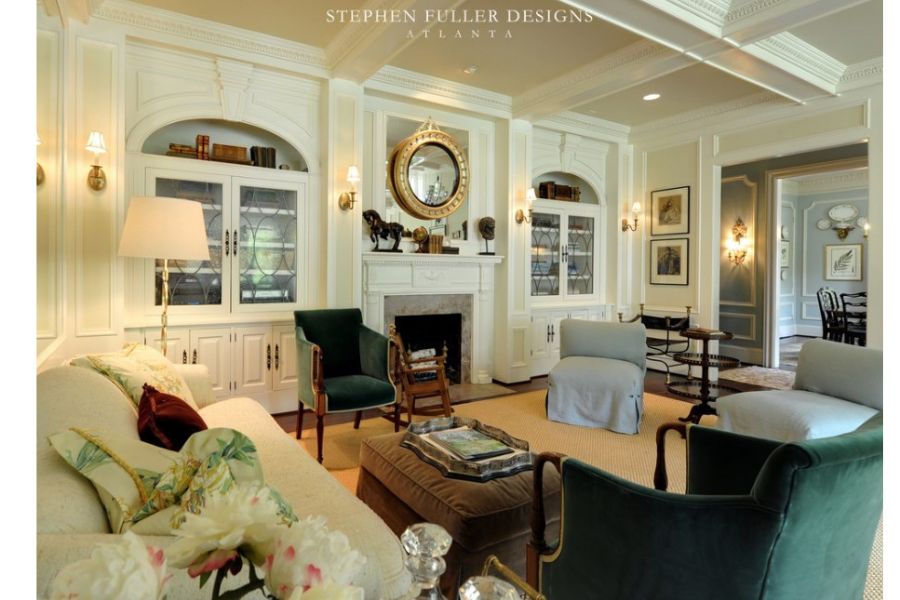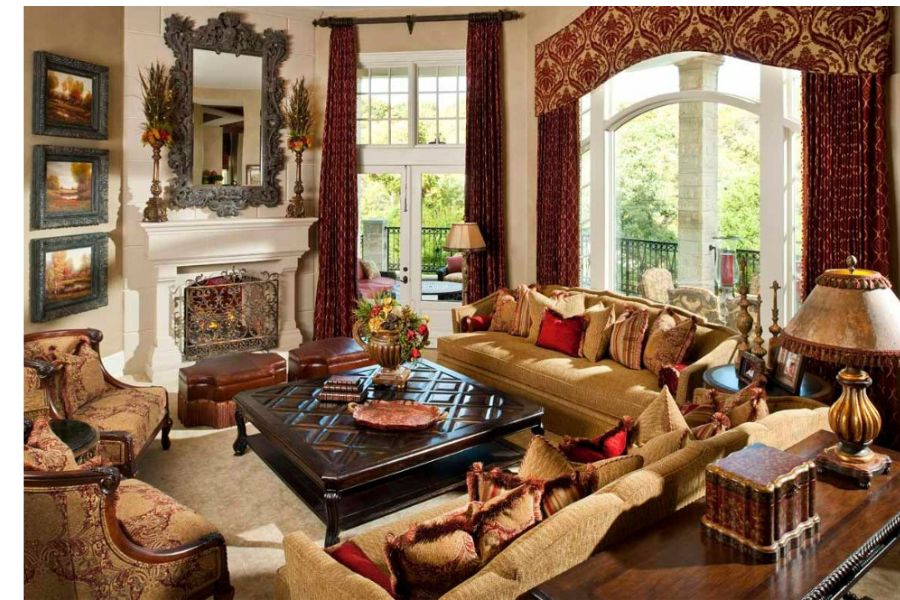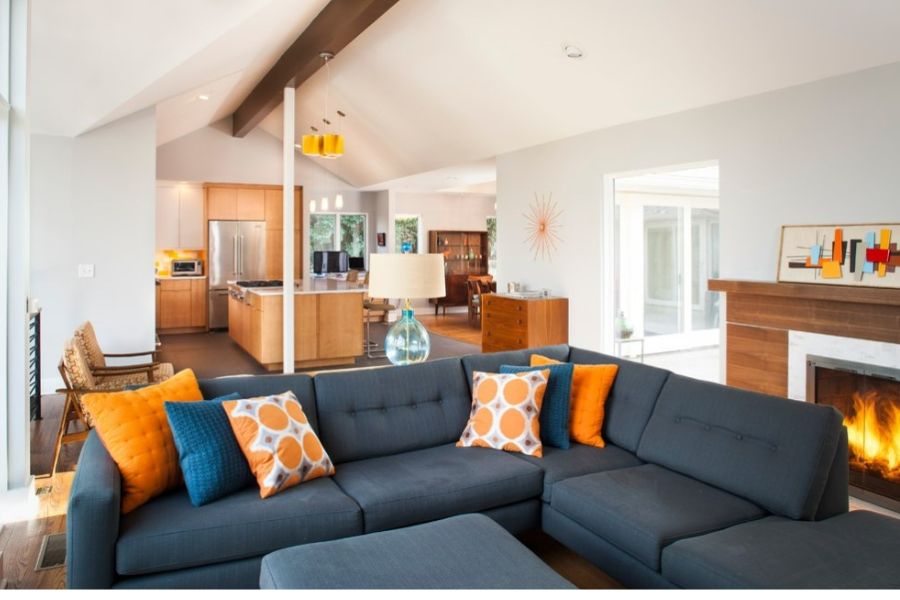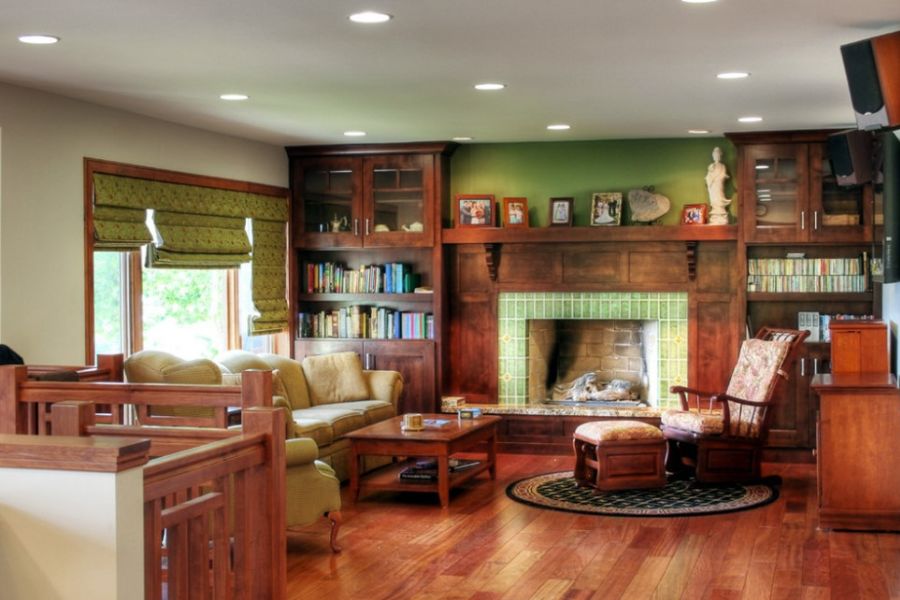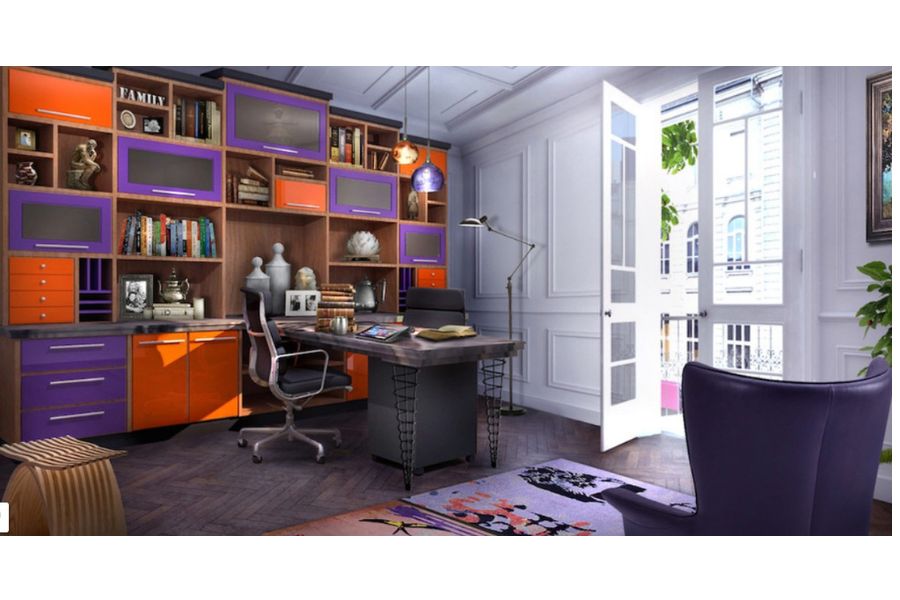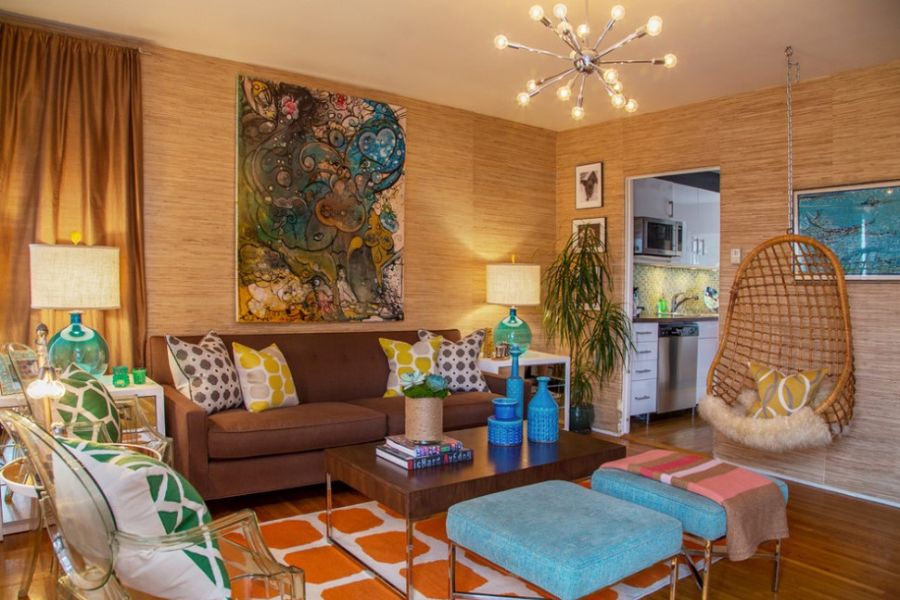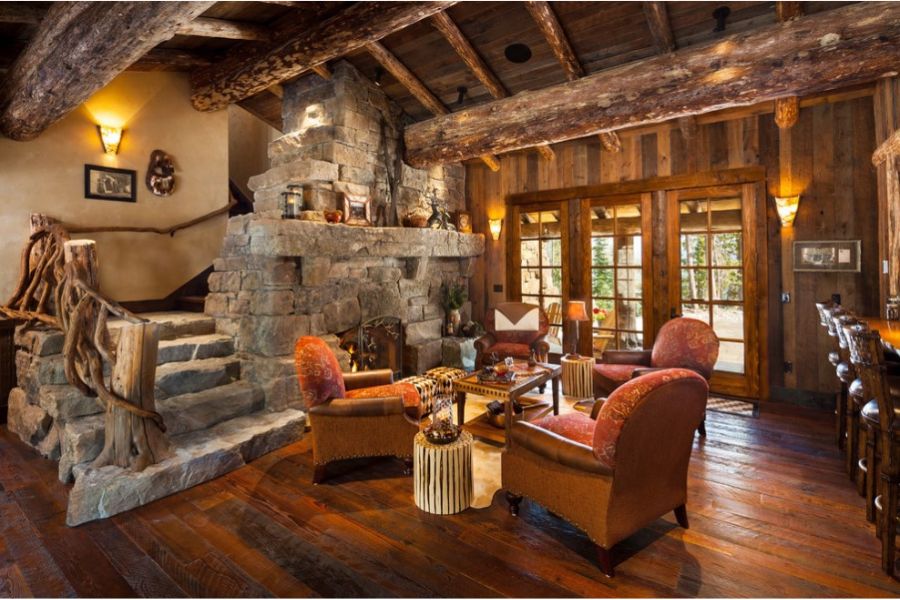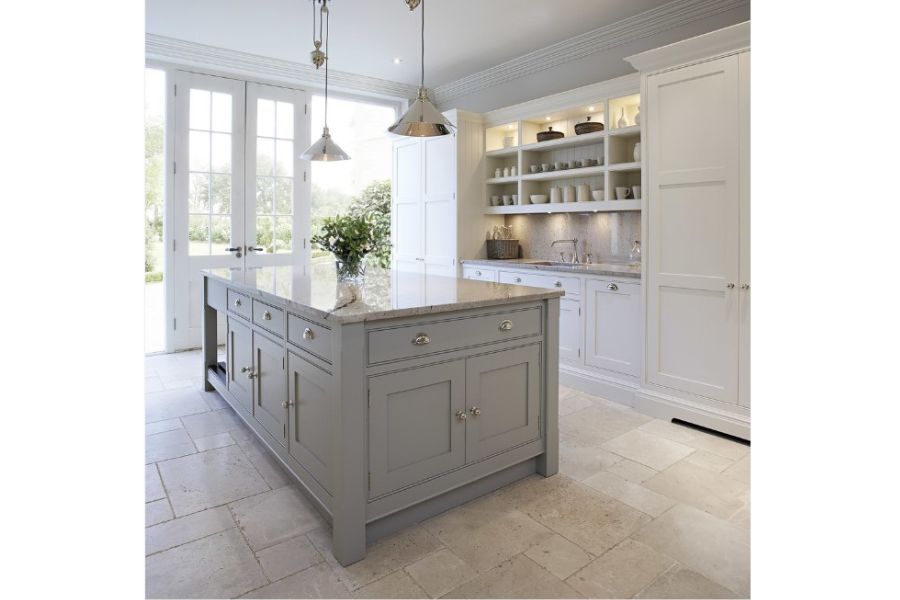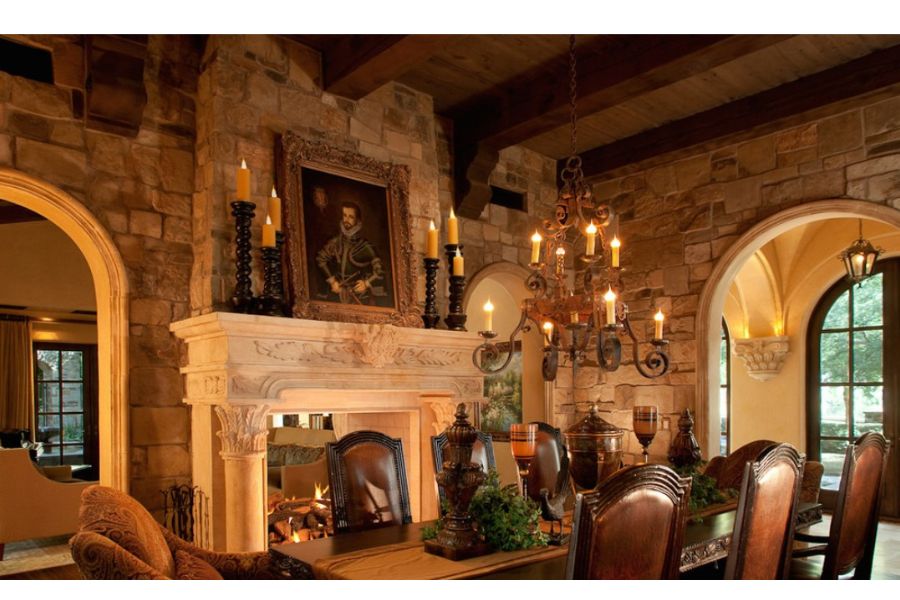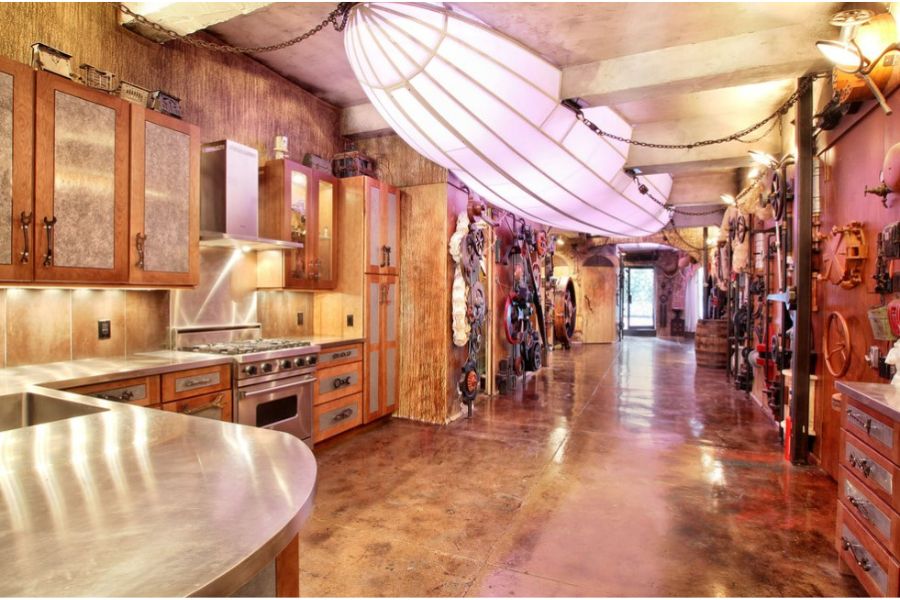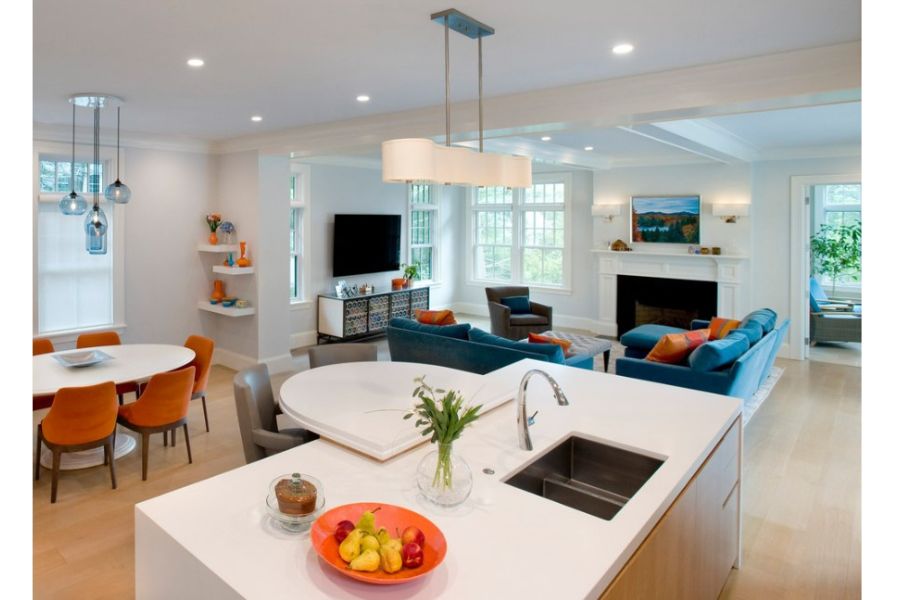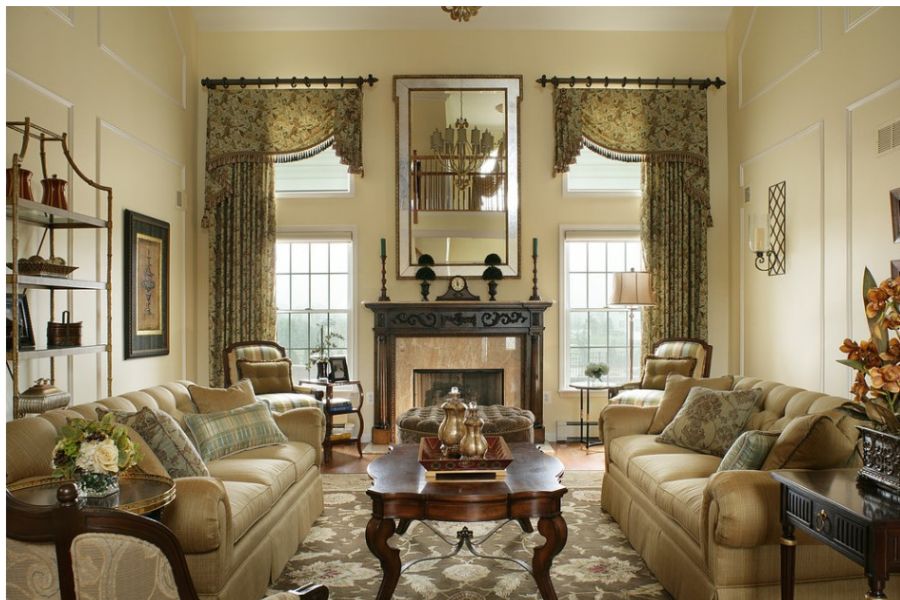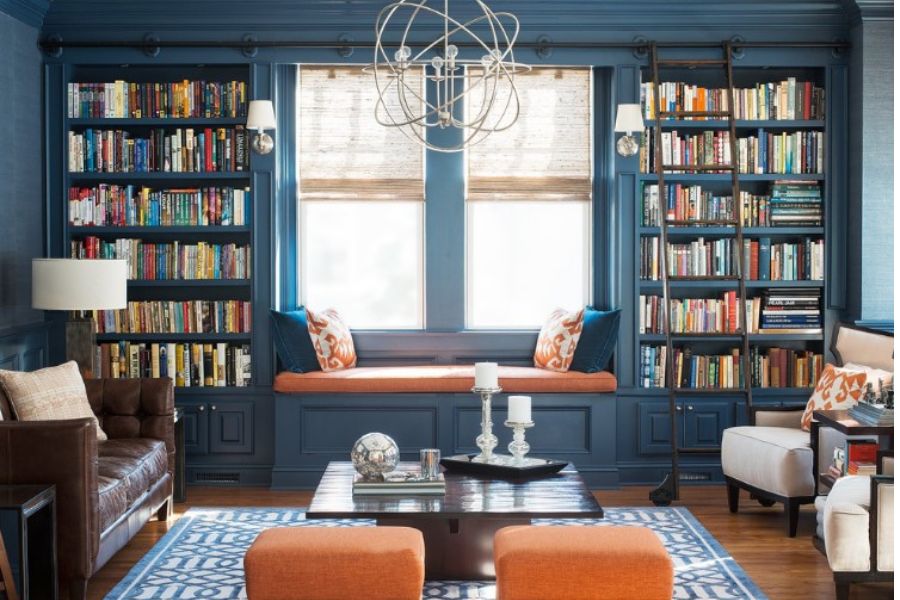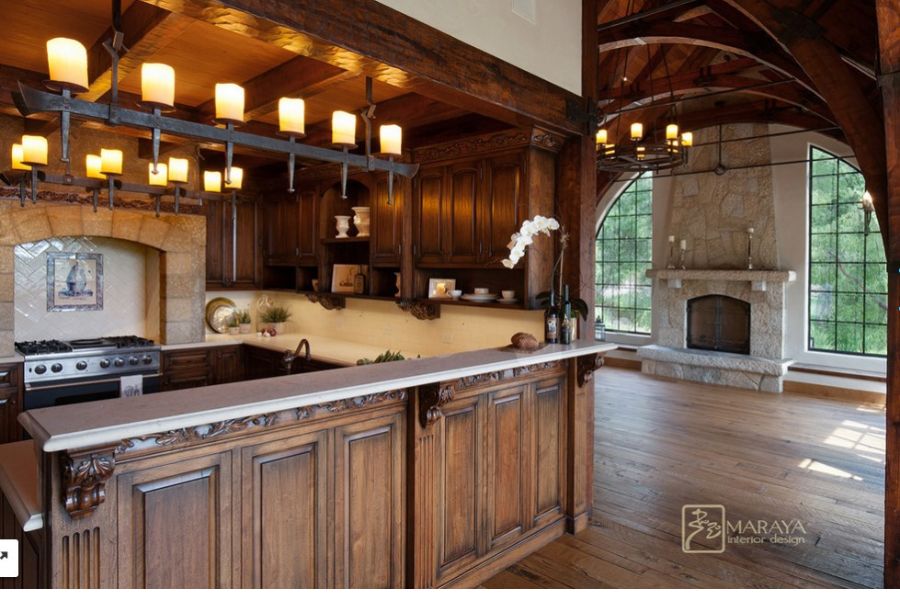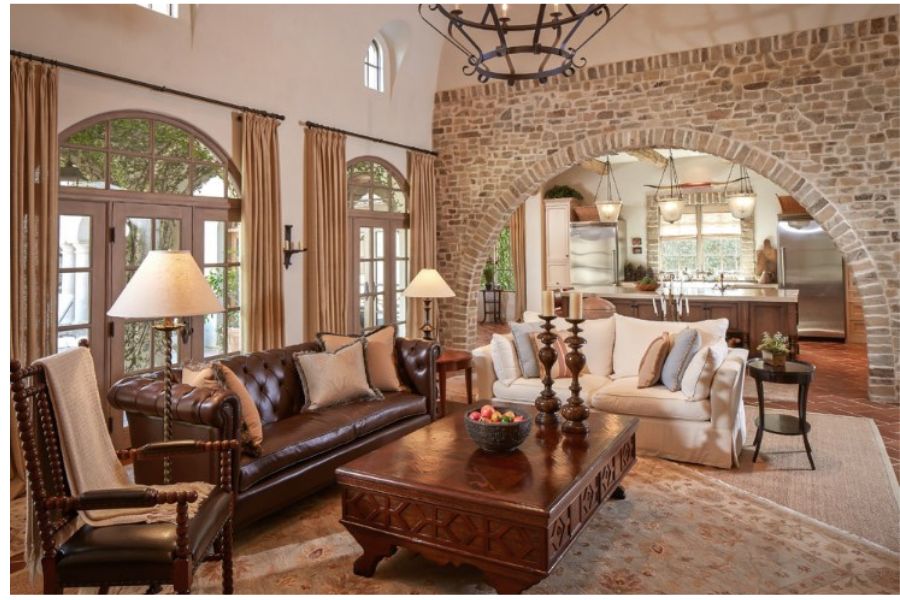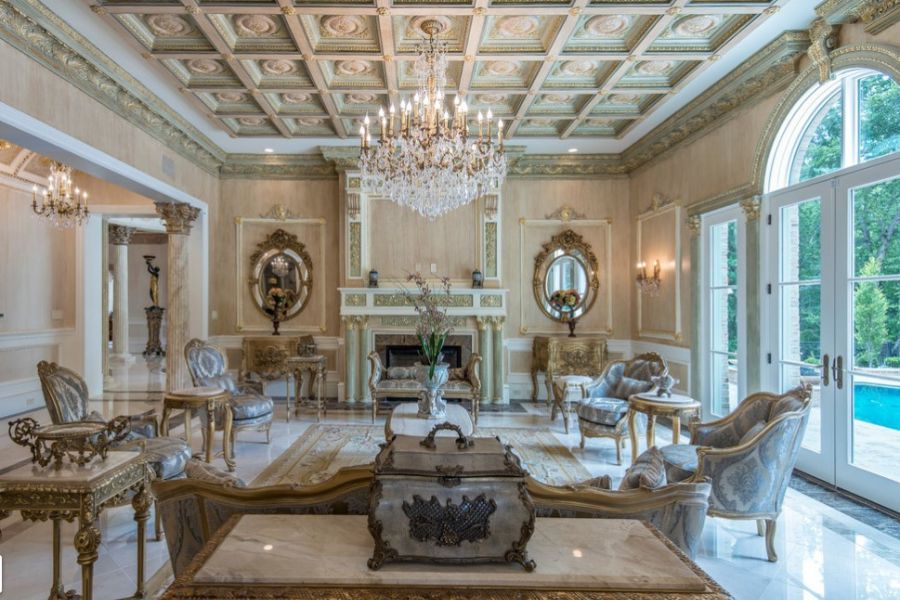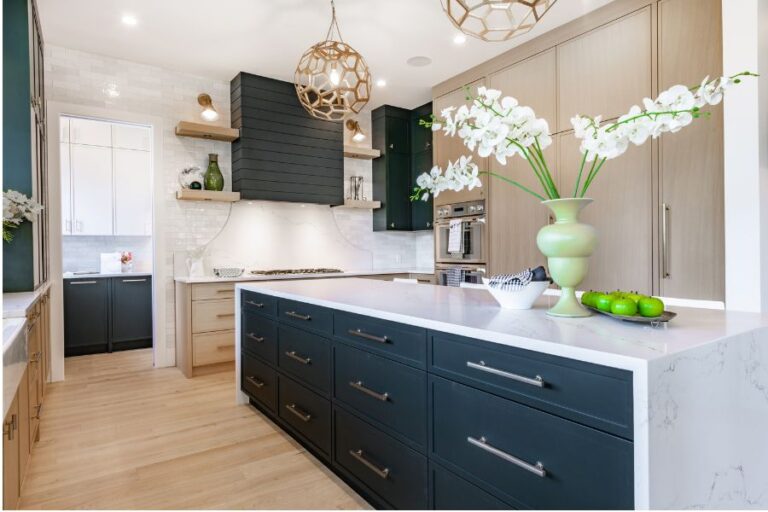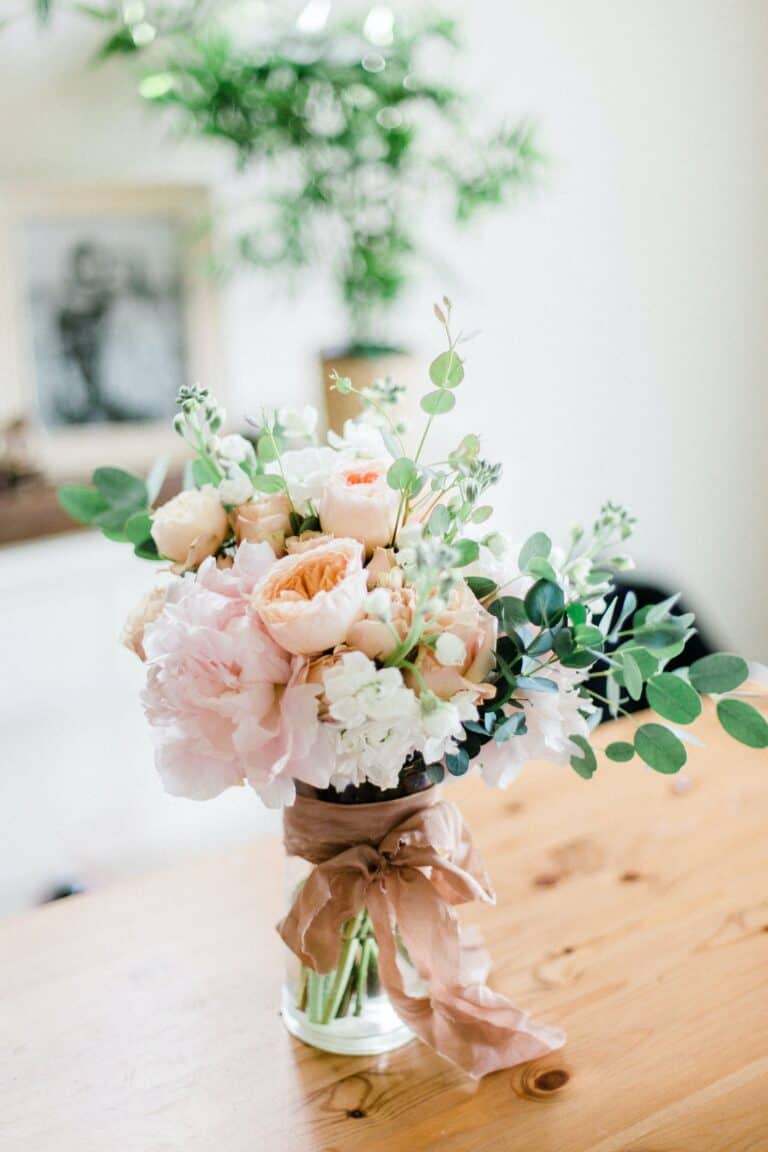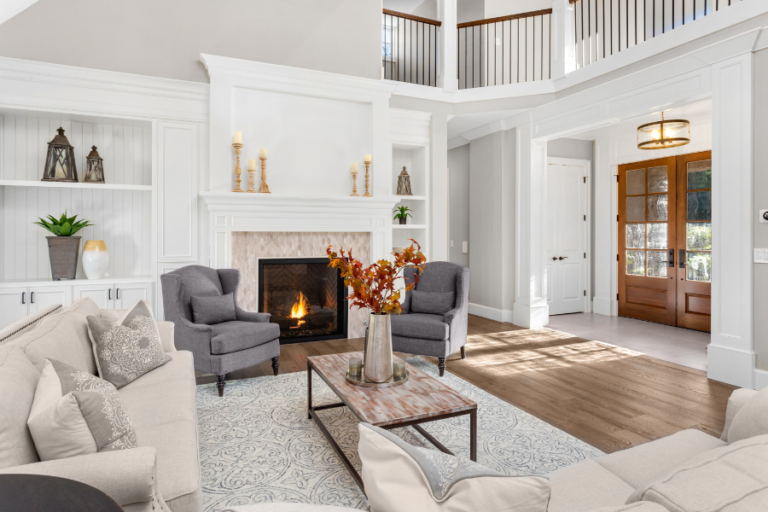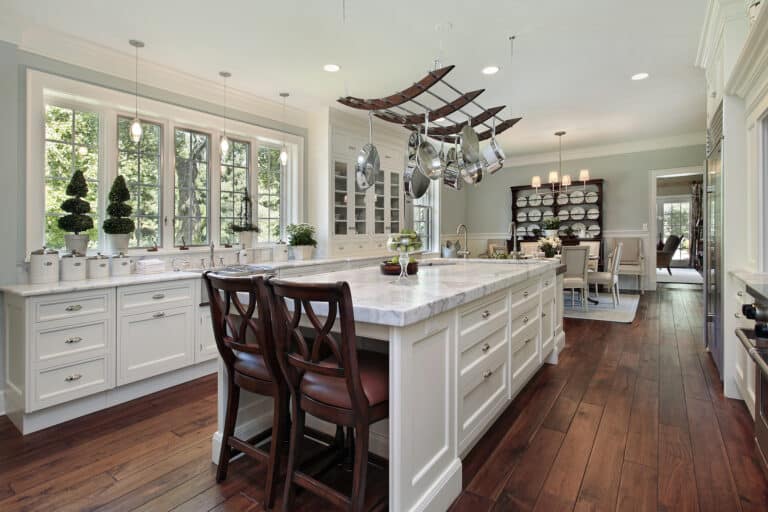SIMPLE TIPS OF 41 TYPES OF DIFFERENT INTERIOR DESIGN STYLES
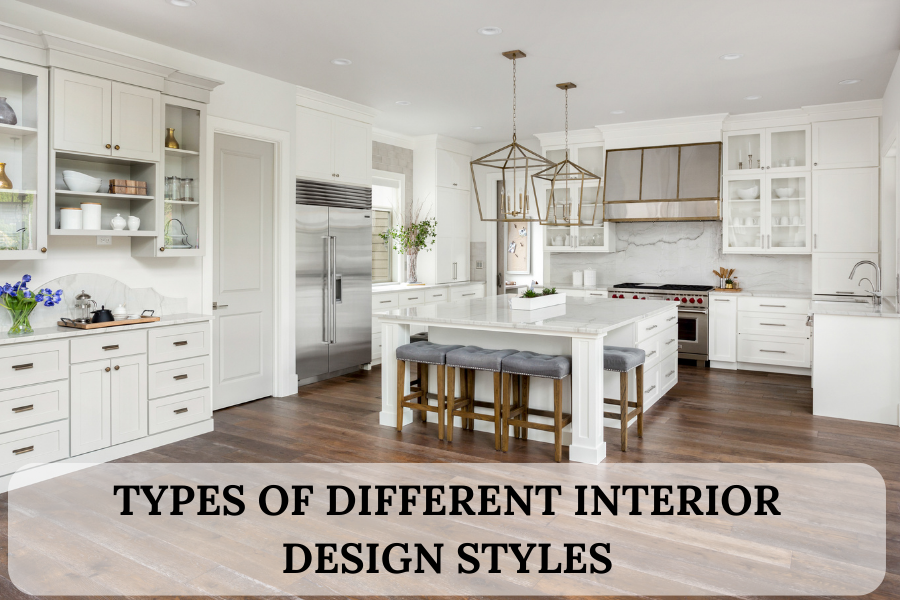

If you are anything like me, you love to look at all of the types of different interior design styles in magazines, Pinterest, websites, homes, you name it! There are so many beautiful design styles.
Or, maybe you are browsing around to see what your style is or what style you would like to use in your home.
In all my online browsings and poring over tons of home design pictures and magazines, countless times I would fall in love with a picture or design, but I couldn't always put a name to the style or different styles in a photo.
Sooooo, after hours of exploring and learning, I decided to put together a list of some types of different interior design styles and some basic main characteristics that I have found and enjoyed learning about. And it has definitely helped in my interior decorating exploits!
I hope this list can help you somewhat too! It just makes me feel so giddy and is just so much fun to see all these amazing interior design styles, it's like an interior design style candy land!! Lol.... so, let's dive on in and take a look!
I know I will continue to add to this list so make sure to check back occasionally to see what else I have added! 😉
Also, these are just my gatherings and general snapshots of what I have learned about different styles and to find ideas for my home or others who have asked for my help. 🙂
THIS POST IS ALL ABOUT TYPES OF DIFFERENT INTERIOR DESIGN STYLES
Table of Contents
1. American Colonial
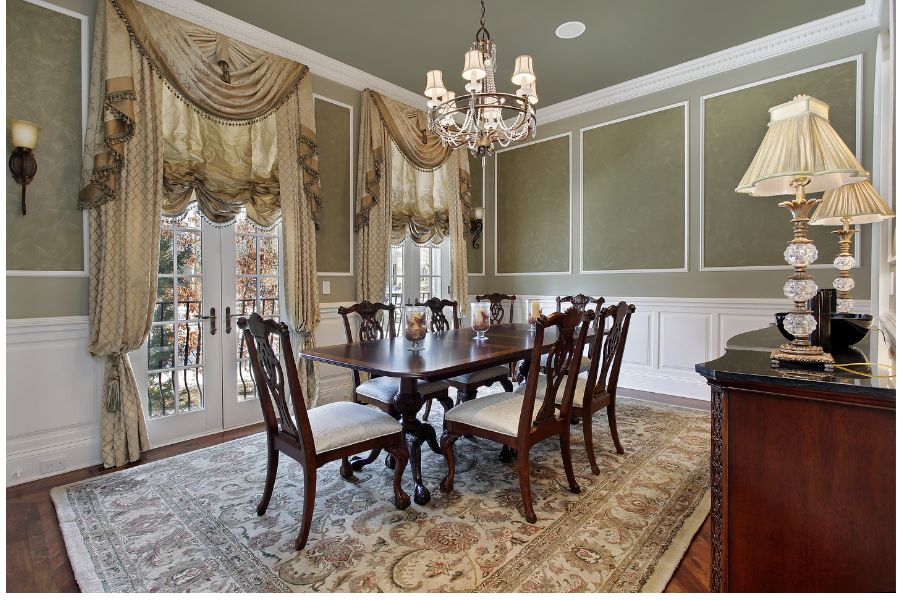

The American Colonial Interior Design style originated in the 18th century and is a part of the overall colonial interior design style which was highly influenced from European settlers in America. It has other off shoots as well such as British Colonial, Spanish Colonial, French Colonial, and Dutch Colonial.
It can vary from a more rustic vibe to a more elegant style.
Main Feature: Simple Elegance
Basic Features: Light and spacious, more subdued muted colors, hand-crafted textiles, hand-made wood furniture, wall sconces, chandeliers, brass and copper, wide baseboards and wainscoting, elaborate moldings, paneled or plastered walls, dark wood furniture, quilts, portraits, botanical prints, flowing curtains.
2. Art Deco
Art Deco Interior Design style originated in the 1920's back in France. It was representative of the Art Deco movement that was happening at that time which was based on adding artistic flair to items of function. It found popularity in the United States and Europe in the 1930's and 1940's.
Main Feature: Bold geometrical designs and colors with a modern flair
Basic Features: Linear and angular lines in furniture, rich colors, simple bold shapes, modern, glamour and luxury, expensive pieces of artwork, silver and chrome, mirrors and glass, modern focus.
3. Artisan
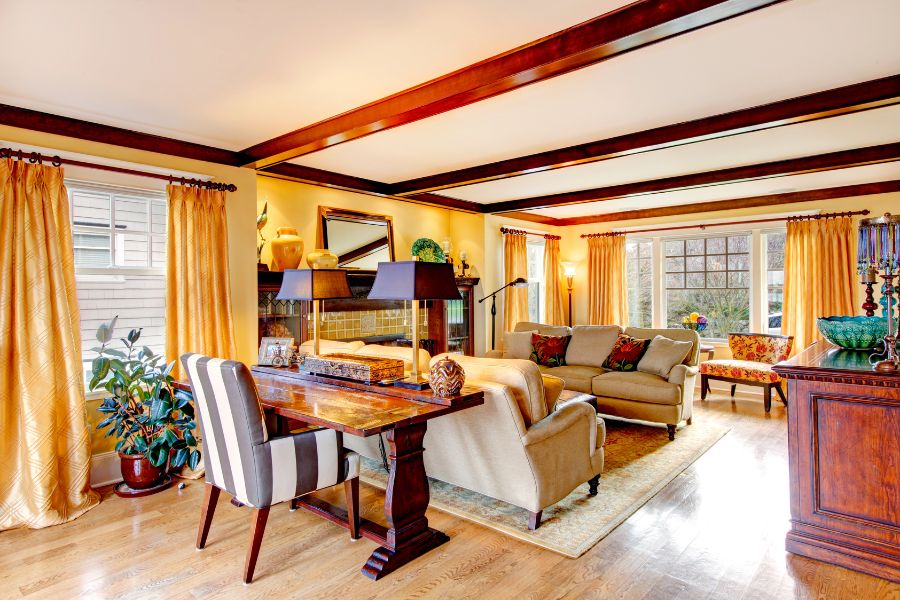

The style of the Artisan Interior Design style is based on handmade, unique, one-of-a-kind pieces of furniture that tell a story that are reflective of their origin and maker. Artisan homes showcase fine custom workmanship that is high quality. An artisan room's interior style is built around one or a few key pieces.
Main Feature: One-of-a-kind design pieces that are high quality
Basic Features: Warm colors, rustic, high quality materials, unique pieces including light fixtures, colorful pieces of fabrics and textures, rich wood cabinets, not very ornate.
4. Asian
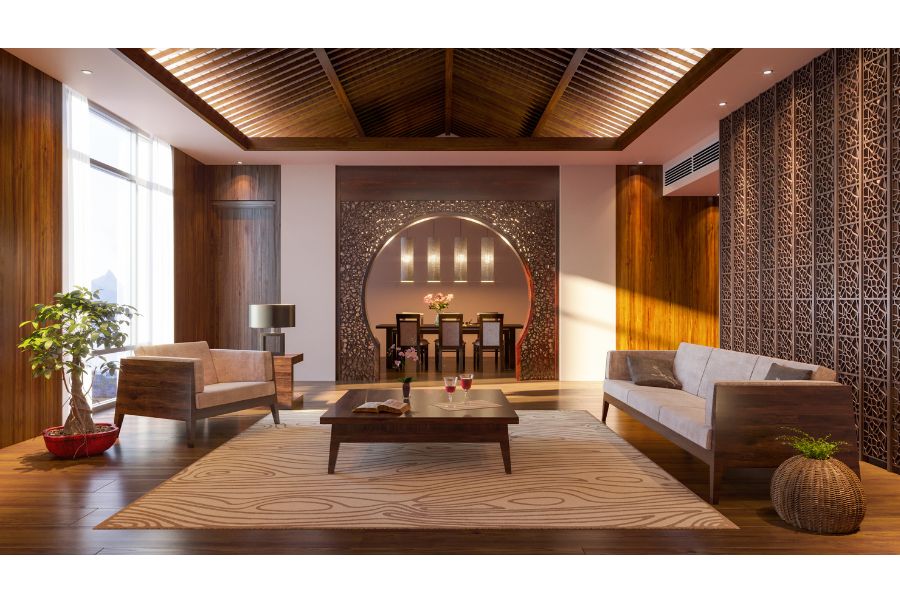

The Asian Interior Design style is actually an umbrella term for many different Asian cultures reflective of their own design styles and traits. The Asian interior design style includes the styles from the cultures of Japan, China, Vietnam, Thailand, etc. and even some East Indian influence.
In the picture above, it reflects a more Japanese based interior design style due to its more minimalistic design and straight-lined furniture and near floor furniture.
Chinese interior design is more opulent with rich bold colors and carved woods and porcelain jars.
Main Feature: Feng Shui-the intentional placement of objects based on objects and their arrangements having energy, positive or negative.
Basic Features: These can range depending on the specific culture in this category, ranging from, as mentioned above, a more minimalistic design such as in the Japanese culture to a more opulent, more maximalist style for Chinese style.
5. Bauhaus
The Bauhaus Interior Design style actually originated from a design school that was created in Germany by a man named Walter Gropius. It is based on his premise that arts and design are to be integrated together with structure and building and form and function and crafts trades.
You will be able to find where it is influenced or tied to other styles such as minimalist, eclectic, and Scandinavian.
Main Feature: Function before form, less is more
Basic Features: Clean lines, focus on function, simple geometric shapes for art with bold colors, lack of ornamentation.
6. Bohemian (Boho)


The Bohemian (or Boho) Interior Design style was actually based on the styles of gypsies, or those who were constant travelers. It is based off of a more laidback, creative, and carefree artistic style including accessories that are more personal.
Main Feature: Laidback, eclectic, and carefree vibe
Basic Features: Mixing of textures, fabrics, and patterns, neutral tone colors, exotic accents with items of personal meaning, fringe and crochet and macrame items, vintage, ambient and understated lighting and multiple sources of lighting.
7. British Colonial
Main Feature: Casual elegance
Basic Features: Dark and light interplay of colors by mixing of dark browns and beiges with whites and neutrals, white walls, lightweight cotton fabrics, travel items represented, use of palms and ferns and other plant life native to the tropical areas, teak and mahogany woods.
8. Coastal
Coastal Interior Design is very similar to the beach interior design style. I actually found articles saying they were the same and others that they were not but they definitely do have a lot of similarities. It is different than the nautical interior design style. This style also has different variations due to the location and its native influences. Different inspirations include the U.S. East Coast, U.S. West Coast, Australian, and many others.
Main Feature: Seaside features with a relaxed aesthetic
Basic Features: Use of neutral colors and colors of the sea, open and airy, abundant light, loose linen upholstery, weathered woods, jute textures, layered blues, earth tones, crisp whites, laid back vibe.
9. Contemporary
Contemporary Interior Design style has some eclectic and modern influences, but it is different than the modern interior design style since it pulls from and is reflective of other time periods. It has a simple influence and is tied to the minimalist interior design style.
Main Feature: Reflective of modern and minimalist designs but pulls from other designs
Basic Features: Open and airy, light fixtures use more streamlined materials including glass, stainless steel, ceramic, 90-degree angles in furniture pieces, furniture with simple fabrics, neutral colors mostly beiges and tans and black and white, use of window treatments and trims and moldings on walls.
10. Cottage
The Cottage Interior Design style is very similar to the coastal interior design style where it has a light and airy ambiance. A cottage style emits a comforting, warm and cozy feeling.
Main Feature: Cozy, warm, welcoming, relaxed, inviting ambiance
Basic Features: Use of neutral colors of whites and creams and warm colors, bead board and/or wood planks on walls, woven rugs, natural light, vintage furnishings, light weight textiles and fabrics, weathered woods, use of lace and cotton.
11. Eclectic
The Eclectic Interior Design style is a fun style where it incorporates and merges different interior design styles that uniquely work with each other, usually tied with a unifying style or theme, to make it "eclectic". In terms of decor items and pieces, it is not minimalist since it uses multiple items to tell a story, similar to the artisan interior style.
Main Feature: Unique mixture of different styles and pieces to reflect the personality of the owner and stories of the different items used.
Basic Features: Mix and match of items and materials and textures, items and pieces have a story, reflective of the personality of the owner or designer, not chaotic- just a mixing and blending of styles and pieces.
12. English Country
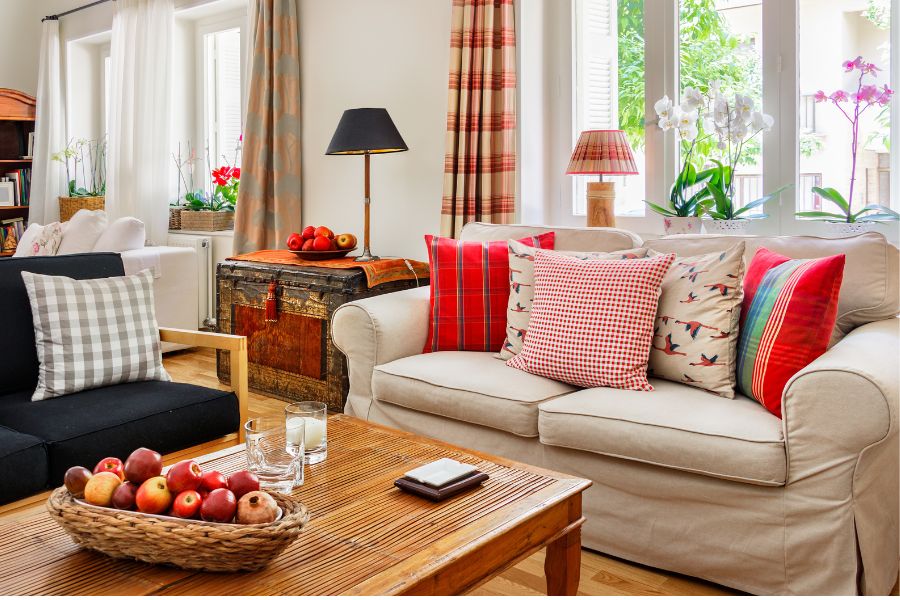

This interior design style also has a warmth and coziness like the cottage style, and like its namesake, the English Country Interior Design style has a more country-rural vibe with a certain "charm" to it.
Main Feature: Vibe of a rural cottage
Basic Features: Antique accessories and vintage pieces, carved wooden furniture, slip covered sofas with skirting that have rolled arms, patterns including chintz, plaids, florals and stripes, colors of red, pinks, blues, and greens, shelves of books, ottomans can be used as a coffee table, modest kitchens.
13. Farmhouse
What is interesting about the Farmhouse Interior Decorating style is that it is also kind of similar to the cottage interior design style in the fact it has a more relaxed vibe. But the farmhouse style also has a practical functionality to it with rustic and elegant finishes.
Main Feature: Relaxed, rustic, functional, elegant aesthetic with a collection of different furniture pieces
Basic Features: Weathered wood, vintage wood tables, use of oil-rubbed bronze and copper, use of colors of white, open shelving, wooden decor pieces, mason jars, diy decor and furniture, pops of greenery.
14. French Country
French country interior design is actually one of my many favorites. It has a unique combination of both rustic and elegant touches, and it has a tasteful and almost timeless appeal in its design and ambiance.
Main Feature: A timeless, rustic and simple elegance appeal
Basic Features: Rustic and refined decor pieces, weathered yet elegant pieces and woods, exposed wooden beams in the ceilings, vintage decor and furnishings, distressed painting, muted and warm colors, soft patterns including damasks and toile, use of natural materials.
15. French Provincial
As I am sure you can see, the French Provincial Interior Design style is closely tied to the aforementioned French Country style. But with the French Provincial interior design, it is based off the Provence region of France and originated from French royalty. That area is known for its elegant furniture.
Main Feature: Warm and elegant
Basic Features: Similar to the shabby chic style, it incorporates rustic and distressed pieces of furniture and is a more elegant version of French country, use of chandeliers, uses the patterns of damask and toile and circles, arabesques, and stripes, uses earth tone colors including lavender and olive due to the region of Provence and its agriculture of lavender and olive trees, and it has a warm vibe.
16. Georgian
The Georgian Interior Design style was formed in the period between the years of 1714 to the 1830's in Great Britain under the reigns of King George I, II, and II. Its architecture and interior stylings were influenced from the temples and villas from Rome and ancient Greece. There were actually 4 different phases of styling in the Georgian style: Palladianism, Rococo, Neoclassicism, and Regency.
Main Feature: Elegance with light and ornate touches
Basic Features: Symmetry in designs and architecture, elegant and ornate touches and styling, classical art and sculptures, wall murals, fireplaces a central focus, urns and vases used throughout, use of different colors depending on the phase including richer shades such as burgundy to more pastel shaded of pastel blue, cream, gray, and mauve, darker pieces of furniture with curves and motifs.
17. Hollywood Glam
This style has some definite pizzazz! It is based off the old Hollywood glamour starting back in the 1930's. Its purpose was to make a statement with a unique blend of mixing styles, mainly art deco and contemporary. I had to choose this picture since my mom loved Marilyn Monroe.
Main Feature: Tasteful/balanced mix of styles showing glamour and luxury
Basic Features: Makes a unique statement of blending styles mainly art deco and contemporary with a sensual and contemporary mix while not overdone, art deco, use of metallics, rich fabrics, furniture has smooth lines while using lavish textures and fabrics and upholstery, mix of patterns including on walls, ceilings, and floors, geometric patterns, animal prints, bold and classic colors using purple and gray, black and white.
18. Industrial


The Industrial Design style is a cool capture of a trend that started back in the '70's, mainly in the U.S. and England where living spaces and lofts were created from old warehouses and factories. From the picture you can see it is more utilitarian and minimalist but still has some warmth.
Main Feature: Raw warehouse vibe with a rustic minimalist and utilitarian aesthetic
Basic Features: Simple, clean lined furniture, exposing of infrastructure bones of interior, textures of brick walls, beams and air ducts and pipes, concrete and wooden floors, lighting you would find in a factory, Edison light bulbs, highlight of wear and tear and imperfections in furniture.
19. Italian
This beautiful interior design style actually falls under the umbrella of the Mediterranean interior design style due to the Mediterranean region where Italy resides. The Italian Interior Design style emits an overall atmosphere of warmth and a welcoming atmosphere with a primary focus on the kitchen. 🙂
Main Feature: Warm, welcome, and open setting to reflect the outdoors
Basic Features: Open spaces with a lot of natural light, warm neutral colors with splashes of vibrant colors including reds, greens, burnt orange, and blues, large windows, wrought iron pieces and lighting, large furniture pieces, terracotta colors and tiles, use of stone and slate and use of ornate mosaic tiles.
20. Mediterranean
The Mediterranean Interior Design style has similarities to the Italian Interior Design style as mentioned earlier since it captures the overall the interior designs of those countries in the Mediterranean region, Italy, Spain, and Greece etc. There is an emphasis of an open and airy ambiance and reflecting the outdoors of those areas in the interior.
Main Feature: Open, warm, and airy yet cozy and opulent reflecting the outdoors
Basic Features: Open floor plan layouts with large windows in order to reflect the outdoors, a type of Old-World opulence while incorporating rustic touches, symmetry and use of wrought iron, plants, terracotta and mosaic tiles, furniture closer to the ground, color use of whites and creams with touches of bold colors such as blues and greens and yellows, arches, use of natural materials including stone and woods.
21. Mid-Century Modern
The Mid Century Modern Interior Design style originated back in the period between the 1930's to the 1960's as a reaction to the styles of the 1800's. It is more focused on what is called the concept of "form follows function" model and is sleek and uncluttered.
Main Feature: Clean and sleek lines and designs with minimal adornments
Basic Features: Use of woods, plastics, metal, plexiglass, and lucite, bare windows and sliding glass doors, skylights, sleek and clean lines, minimal decor, use of neutral colors with accents of retro-types of colors such as oranges and mustard yellow, slender legged furniture, marble surfaces, use of wood, bold pieces of art, mix of materials.
22. Minimalist
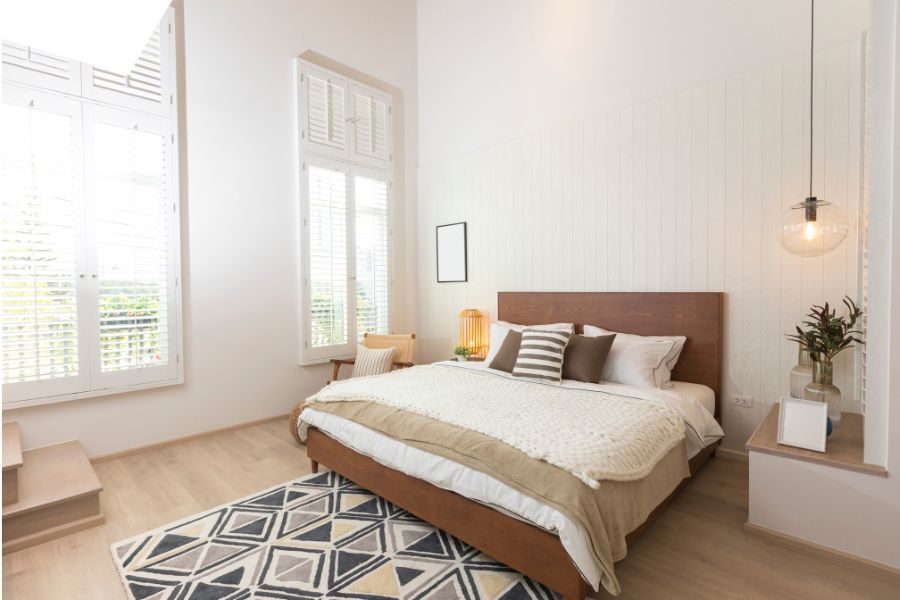

The Minimalist Interior Design style is focused on using your most basic and simple essential elements in your home. It is the less is more mentality. You will be able to see this style in other interior design styles such as Mid Century just mentioned, along with the Scandinavian and Modern designs.
Main Feature: Simplicity, lack of clutter while having warmth and light
Basic Features: Use of natural materials such as wood, use of more classic pieces of furniture and items, open layout, focus on warmth and light and a peaceful ambiance, use of throws and blankets, plentiful use of negative space (meaning plenty of empty space), areas are uncluttered and neat and tidy, use of whites and beiges and neutral tones, use of monochromatic palettes, functional furniture.
23. Mission
The Mission Interior Design Style is also used interchangeably with the Craftsman style mentioned earlier. I guess technically I could have included it with the Craftsman Interior Design style, but I thought I should give it its own section since its roots are from the Spanish missions in Southern California. I've seen the both the terms used frequently and due to the roots of this style. It was a part of the arts and crafts design movement in opposition to the English Victorian style.
Main Feature: Utilitarian design with use of wood and function over form, yet warm
Basic Features: Use of earth tone colors and neutral tones and creams and solid colors, use of woods for furniture which were very sturdy, features including built-in wall shelving, angular types of lighting and lamps, straight and clean lined wooden furniture, more minimalist patterns, stained glass, cabinets with glass fronts and doors, geometric shapes.
24. Modern
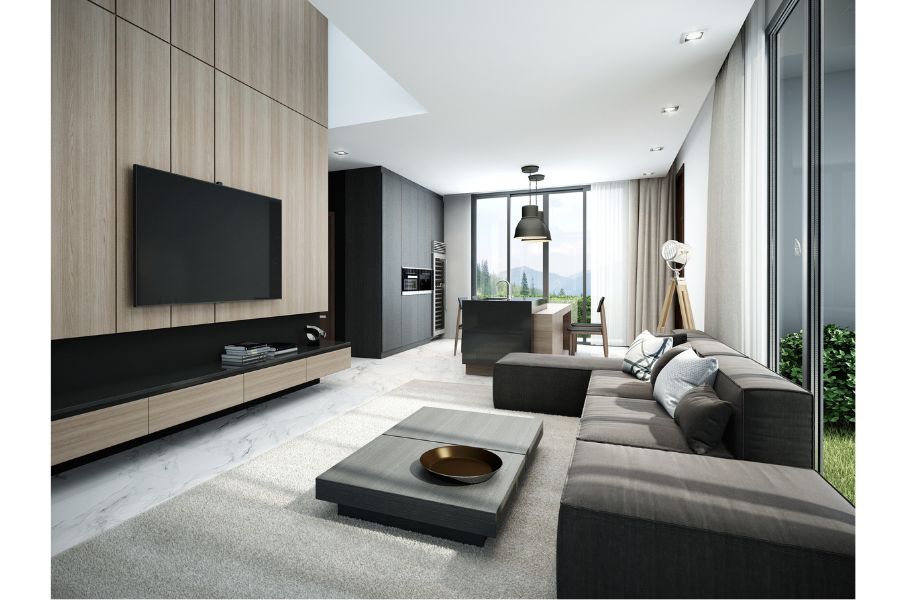

Similar to the Minimalist Interior Design style, the Modern Interior Design style focuses on simplicity and cleanliness and has an ambiance of coolness. It is actually tied to the Bauhaus movement, mentioned in an earlier design style, and has some Scandinavian design traits (we will look at the Scandinavian later). A feature to be noted, modern and contemporary are not the same style since contemporary incorporates more than one style to reflect a style that is a current trend or favorite.
Main Feature: Simple, minimalist, organized, cooler non-cluttered design
Basic Features: Neutral color tones including black, white, gray, with some pops of color, some wood and metal and glass furniture and use of chrom, cooler atmosphere, multifunctionality of pieces for furniture, there is little to no decor, large windows and large windows.
25. Modern Farmhouse
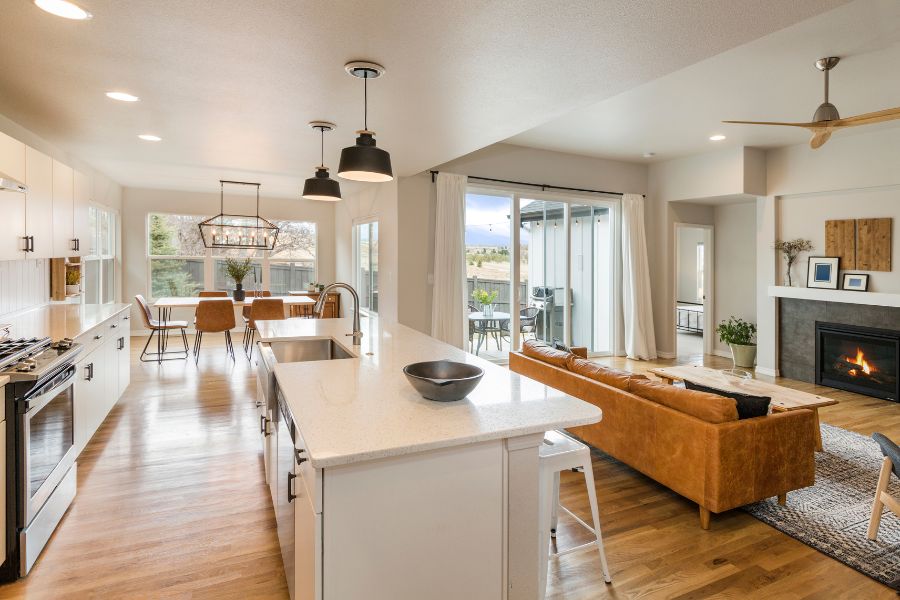

The Modern Farmhouse Interior Design style is a unique blend of both old and new combining a farmhouse theme back from the US 1800's, with a contemporary twist of modern touches. This style also shows reflections of more than one style of not only a farmhouse theme with modern twists, but also some features of minimalism, rustic and Scandinavian influences.
Main Feature: Simple, sophisticated, contemporary farmhouse style with warm, minimalist, rustic functionality
Basic Features: Neutral color tones with white walls, industrial metal appliances and lighting, marble counters, farmhouse sink in the kitchen, low shine finishes, mix of natural materials and wooden furniture with some irregularities, mixing of textures and textiles to bring some unique and authentic touches, a warm but clean and multifunctional atmosphere, comfortable beauty.
26. Post Modern
The Postmodern Interior Design style is reflective of the trends during the 1960's to the 1970's. It was formed to reflect more individualistic styles and design as a result of the rejection of the modern and midcentury designs. It was galvanized by the bohemian and beatnik trends at that time.
Main Feature: Bright, bold, individualistic, aesthetically complex features where form does not follow function
Basic Features: Mixing of textures and materials and bright and bold contrasting colors, individualistic designs and offbeat furniture, use of stainless steel and velvet and colored rugs, high ceilings, mixing in of pop culture and almost a cartoonish influence in design.
27. Retro
The Retro Interior Design style is a style of incorporating the looks and styles from the 1950's, 1960's and the 1970's. It is somewhat eclectic where it mixes and combines the old and the new with abstract and funky features. It actually first appeared in the Scandinavian countries.
Main Feature: Combination and reflection of abstract and funky features from the past of the 1950's, 1960's, and the 1970's
Basic Features: Eclectic, bold patterns, bright and vivid colors, use of plastics, shiny leather and faux leather, hippie era designs and flowers, heavy use of patterns and textures, abstract pieces of art, art of singers and vinyl records, bean bags and hanging pod chairs, unique shaped furniture, neon and fluorescent lights.
28. Rustic
Rustic Interior Design style is based off of 19th century America and the settlers using the materials that were local to where they lived to make their homes and furnishings. It has a charm of showing the imperfections of the wood and stone used in a design, and a simplicity and ruggedness and warmth to an interior.
Main Feature: Reflective of natural materials used in an interior also showcasing warmth and comfort and a sense of ruggedness.
Basic Features: Fireplaces are key and central to a rustic home, use of wood and stone in their more natural form, use of neutral colors including browns, beiges, warm whites and muted colors, layering of rugs and blankets and textures including burlap and jute, open wood beams in ceilings and throughout, highlighting of imperfections of furnishings while showcasing warmth and simplicity, use of iron, copper, and brass, wooden furniture, animal hides and antlers.
29. Scandinavian
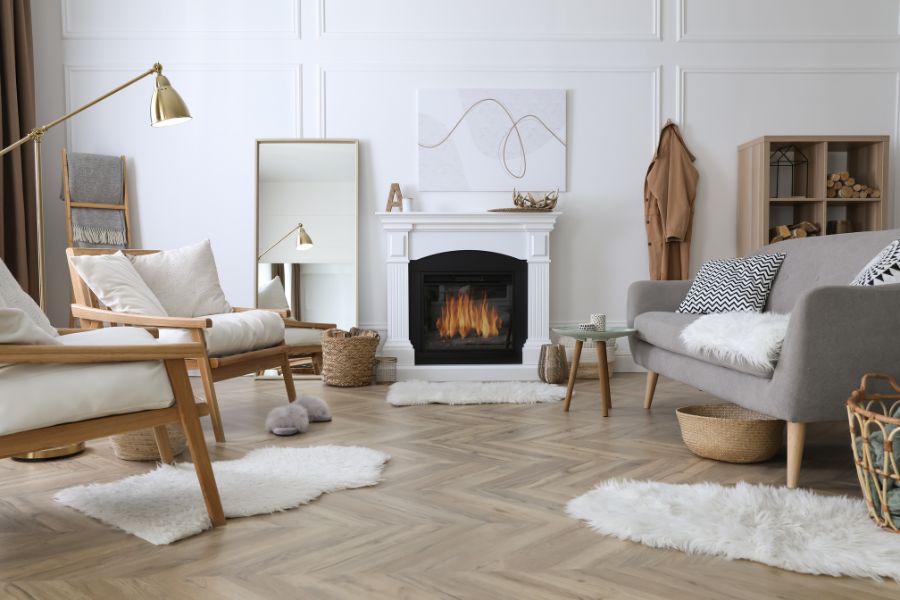

Based off of a simplistic aesthetic, the Scandinavian Interior Design style is focused on simplicity, functionalism, natural furnishings, and minimalism.
Main Feature: Simplistic, functional placement of furnishings, with a sense of warmth and nature
Basic Features: Use of neutral colors including whites, beiges, and grays, clean lines of furniture that have multiuse features, bold geometric patterns, warmth created through layering of textiles and blankets, use of jute and linen, lighting is an important feature including ambient lighting, incorporation of nature and its beauty in the styling, and decor is usually storage.
30. Shabby Chic


Originating in the 1980's, Shabby Chic and its incorporation of distressed, painted furniture began from a lady named Rachel Ashwell from London when she would shop at flea markets. It blended a mix between rustic and elegance touches with refurbishing furniture and vintage pieces.
Main Feature: Distressed, painted furnishings mixing a worn, shabby look with elegant, charming touches
Basic Features: Balance between vintage, rustic, worn pieces with elegant touches, main colors are whites and pastel colors, the aesthetic is delicate and soft and romantic, use of wicker and weathered wood, lace, big sofas, cottons and linens, vibe is a cozy and relaxed ambiance with a sense of charm.
31. Shaker
Based in the mid to late 1800's in the U.S. New England area, the Shaker Interior Design style was formed based off of an intended use and need mindset, using quality construction of furniture and furnishings and cabinets as seen in the photo above. The Shaker style is one of high quality with hand-crafted workmanship and construction made with care and a goal of perfectionism.
Main Feature: Practical, simple, utilitarian design based on need and intended use
Basic Features: Colors are soft usually white or tans and also soft blues or greens or grays, natural light is central, simple clean lines in furniture and furnishings, furniture has tapered legs, cabinetry has recessed panels, use of shutters and limited to no artwork or adornments, use of chair rails and shiplap sidings, minimal curves and limited detail.
32. Southwestern
The Southwestern Interior Design style, also referred to as the "desert decor" is inspired by the southwest region of the U.S., primarily Arizona and New Mexico. It is a culmination of multiple influences including a Spanish influence, Mexican textile influence, Indigenous-Native American influence, and also some bohemian influences.
Main Feature: Reflective of the desert environment and ecosystem of the Southwest U.S., focused on earth tones and stucco finishes and curves and terracotta tiles
Basic Features: Neutral colors of off-whites and creams and beiges with pops of color of turquoise, reds, greens and burnt oranges, Indigenous-Native American and Mexican textiles and patterns including geometric patterns, stucco walls, wrought iron pieces, reclaimed wood and knotty wood, wood beams in ceilings, pottery and woven baskets and ceramics, woven rugs and quilts, outdoor patios, ranch style layout of homes, wooden and leather furniture, and hammered metal light fixtures.
33. Spanish Renaissance
Spanish Renaissance is a fusion of the Spanish Mediterranean Interior Design style with the Renaissance era. It's a blending of the interior styles of Christian Spain with the Moorish gothic architecture by melding together their artwork and workmanship that is both intricate and ornate.
Main Feature: Grand, intricate, and ornate features with dark woods and wrought iron
Basic Features: Color tones are usually neutral, pops of color are usually reds and greens in the furniture and textiles and rugs, a lot of intricate and ornate work in the furnishings and furniture and finishings in the interior, dark woods used in the furniture, use of wrought iron in the light fixtures including chandeliers and wall sconces, use of geometric pattens and designs, grand staircases, arched doorways and walkthroughs, hard floors of stone or tile or brick.
34. Steampunk
The Steampunk Interior Design style is primarily based upon and influenced by the novel "The Time Machine" written by H. G. Wells in England in 1895. The premise of the book was on time travel and the setting of the book highly influenced this type of style.
Main Feature: Industrial type of style with Victorian influences
Basic Features: Industrial elements with some elegant and Victorian accents and twists, muted neutral colors, use of metal in accents and wall coverings and sinks etc, exposed materials such as bricks of walls and ceilings, botanical pictures, books, wall art, Victorian gadgets, travel decor and pieces, steamer trunks, gear wall clocks.
35. Swedish
The Swedish Interior Design style is also a minimalist type of style, also similar to the Scandinavian Interior Design style, where there is a focus on simplicity and a focus on form follows function, but it also reflects a simple elegance.
Main Feature: Simple and practical with a focus on function but with a simple, refined elegance
Basic Features: Use neutral colors primarily white and off-white, with accents of bold colors or neutrals, use of layered textures with blankets and pillows and rugs, focus on open space in a room and on light, use of as much natural light as possible, focus on nature, use of cotton, wool and sheepskin, and leather, use of patterned fabrics including stripes and folk patterns, glass, ceramic mugs.
36. Traditional
The Traditional Interior Design style encompasses more than one style, such as the Georgian, Victorian, Colonial, and Mediterranean styles. It represents the styles from the 18th and 19th centuries in Europe, primarily England and France, and the early U.S. Despite there being multiple styles represented in this overall style, there are some basic features in the Traditional Interior Design style.
Main Feature: Sense of timeless elegance and harmony in design and layout
Basic Features: Colors include neutrals such as beiges, whites, to dark colors, symmetry and intentional placement of furniture and furnishings, moldings on walls including wainscoting, boiserie (French for wooden paneling), crown moldings, and picture frame moldings, use of copper and brass features and accents, chandeliers and candelabras with understated and ambient lighting, curved pieces of furniture with dark woods, elegant consoles, oil paintings, artwork and a variety of decor and wall art, heavy curtains, and vases and figurines.
37. Transitional
The Transitional Interior Design style is a unique and interesting blending of both traditional and contemporary interior design styles. It was a reaction to the more modern style of that day in the 1950's, with its clean lines and more minimalist focus by incorporating more traditional design elements into the aesthetic.
Main Feature: Unique blending of both modern-contemporary designs with traditional designs
Basic Features: Mix of traditional and contemporary/modern designs and furnishings and fixtures such as in the picture above a blend of traditional bookshelves with more modern furniture, color palette is more neutral with pops of colorful accents, focus on using a statement piece in a room and designing and decorating around that, wooden and metallic furnishings and decor used, pillows and cushions used as accents, and some rugs and use of contemporary art.
38. Tudor
Based off of the 16th century medieval English Tudor design style, the Tudor Interior Design style was reflective of well-to do households, built with a strong craftsman style influence and functional simplicity in its aesthetic. This style was created to withstand colder weather and climates. It gained popularity in the 1890's to 1940's but was used less after World War II since they were more expensive to build due to the materials.
Main Feature: Gothic, craftsman yet cozy style utilizing many materials focused on wood and built or expanded to meet a need with a fireplace as a focal point and unique arches
Basic Features: Asymmetrical gables in the house, unique arches, fireplaces prominent for heat, heavy use of dark yet warm woods, wood paneling, wood beams in ceiling with box beam ceilings, front door also significant with an arch, bay windows, stone and brick also used, colors are more earth toned with more fall time colors, usually 2 story, wrought iron lighting, velvet fabrics, farmhouse sinks and high ceilings.
39. Tuscan
Tuscan Interior Design style homes are also part of the umbrella of the Mediterranean Interior Design style. The Tuscan Interior Design is based off of the area of Tuscany tho, a region in central Italy. This style has a rich history tied to its namesake and country, and it also has Spanish and French influences.
Main Feature: Warm, open, rustic yet elegant aesthetic reflective of the outdoors and natural surroundings from the Tuscan region
Basic Features: Colors are neutral with earth tones including pops of color of yellows, blues, and burgundies, terracotta tiles and stone, worn plaster, ceramics and pottery, copper accents and copper pots, grand fireplaces, ceilings with wooden beams, tapestries used for artwork, ornate wooden features and carvings, large windows with a lot of natural light, simple country rustic ambiance, large chandeliers, rod iron and iron pieces and accents, wall sconces, and courtyards with fountains.
40. Victorian
The Victorian Interior Design style is an ornamental and romantic style that began in the 1800's during the reign of Queen Victoria, known as the Victorian era, till her death in 1901. There was an emphasis and increase in the presence of opulent and ornate decor since it was during the Industrial Revolution which made items more accessible to the middle class along with innovations in production and materials including colors and paint.
Main Feature: Ornate, elegant, opulent, romantic, and colorful design, decor, and furnishings featured in more homes due to Industrial Revolution
Basic Features: Color palette ranged from darker colors of forest green and burgundies and blues (due to high levels of soot) to more soft pastel colors, very ornate and intricate and opulent artwork and decor pieces, tapestries and wall art and portraits, wallpaper, ornate chandeliers, wall sconces, heavy fabric drapes, decorative woodwork, stained glass windows, and very ornamental pieces of furniture.
41. Vintage
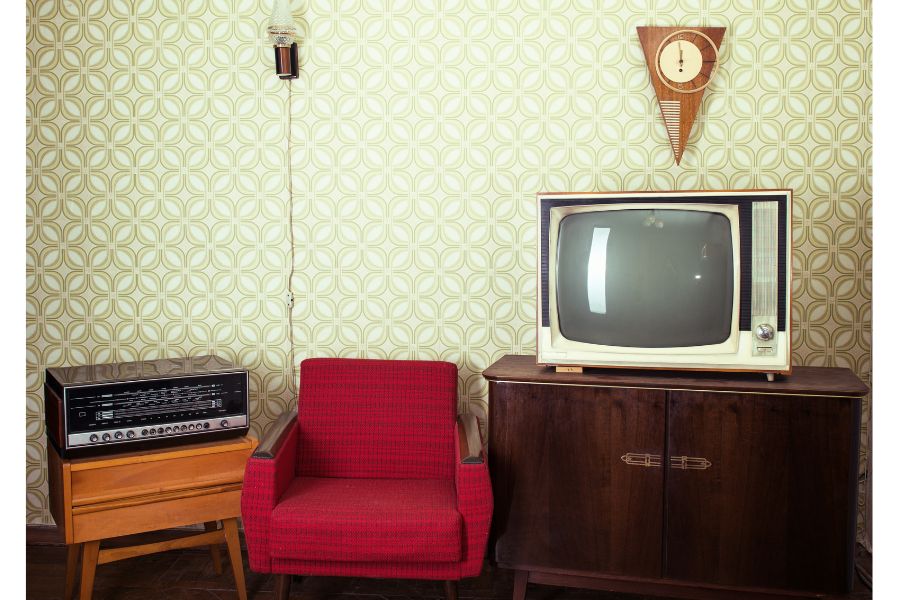

A Vintage Interior Design style is based upon using earlier interior design styles and items from former periods of time, primarily from the 1940's and 1950's and tapping into a sense of nostalgia. It has a little bit of a transitional sense in that it incorporates new and old items to capture and recreate a prior time in history and its sense of style. Retro and vintage are different- retro is a re-creation of something old but vintage is something old.
Main Feature: Creating a sense of nostalgia of prior times and styles, primarily the 1940's and 1950's through decor and furnishings from those time periods
Basic Features: Use of second-hand items and decor, primarily from the 1940's and 1950's, visual interest and unique pieces reflective of the time period that is being styled, floral patterns, records, radios, t.v.'s, use of rugs and wall hangings, lighting fixtures and lamps and chandeliers from earlier time periods, tools, mirrors, and materials and clothing from earlier periods.

